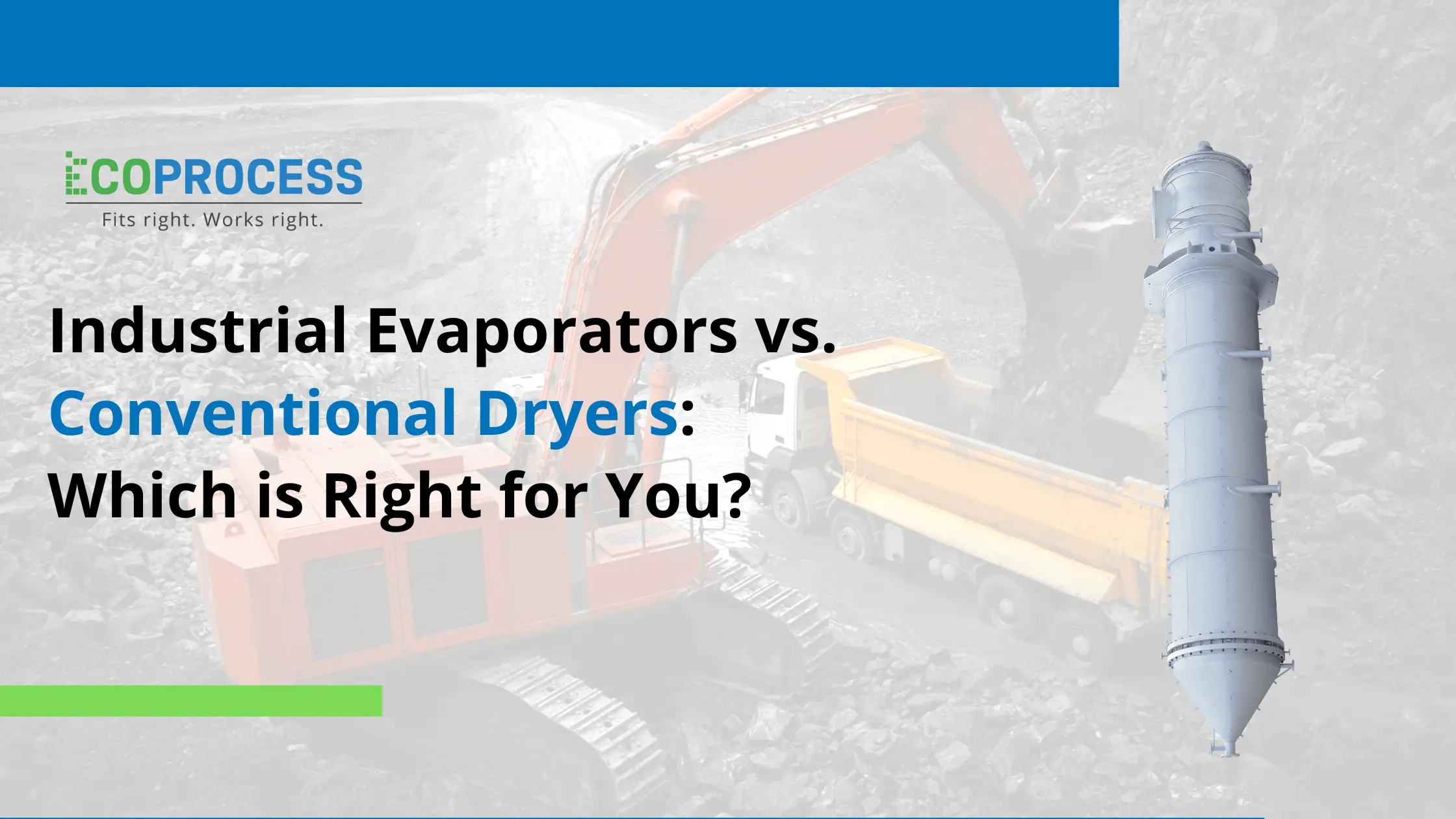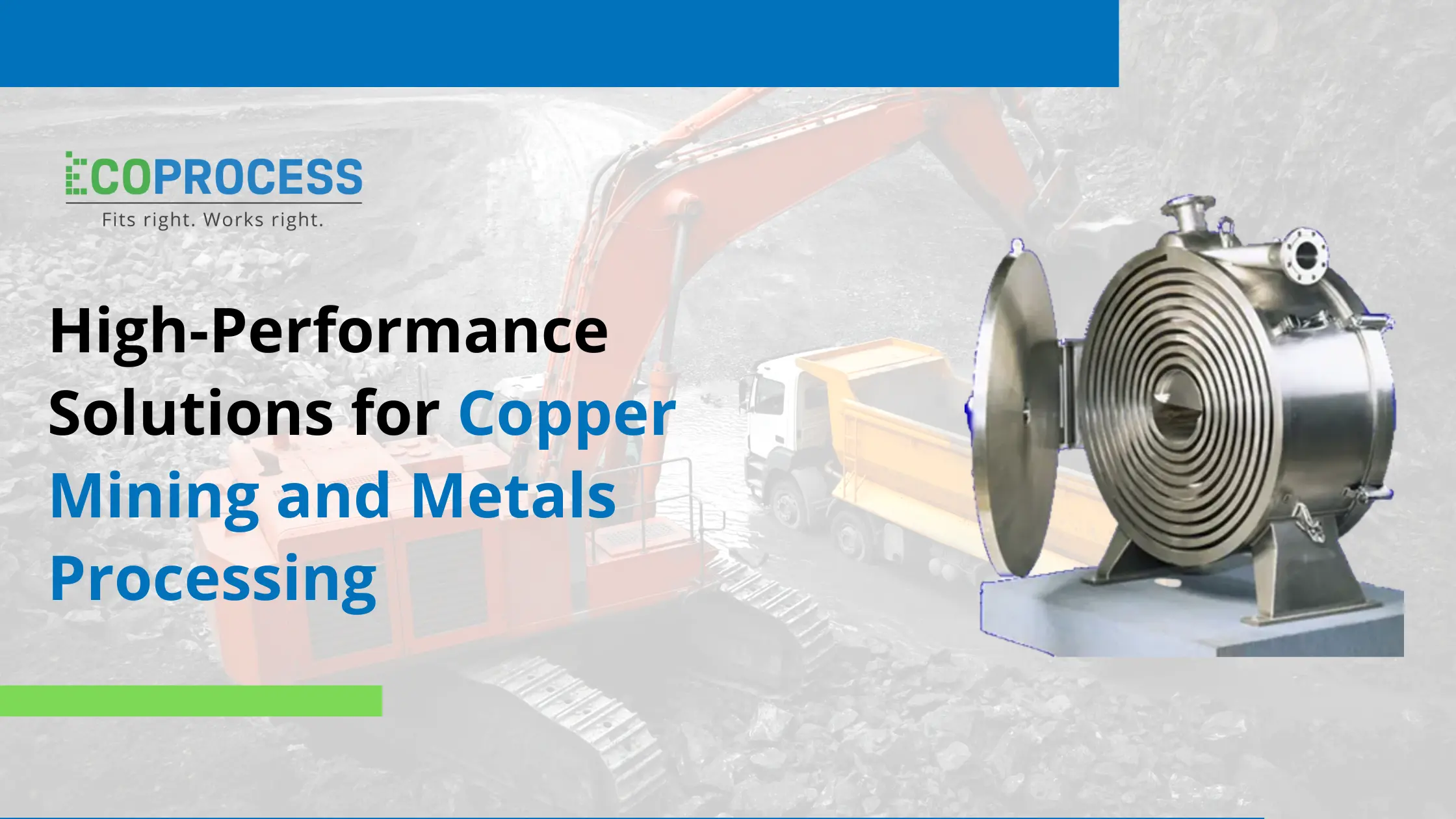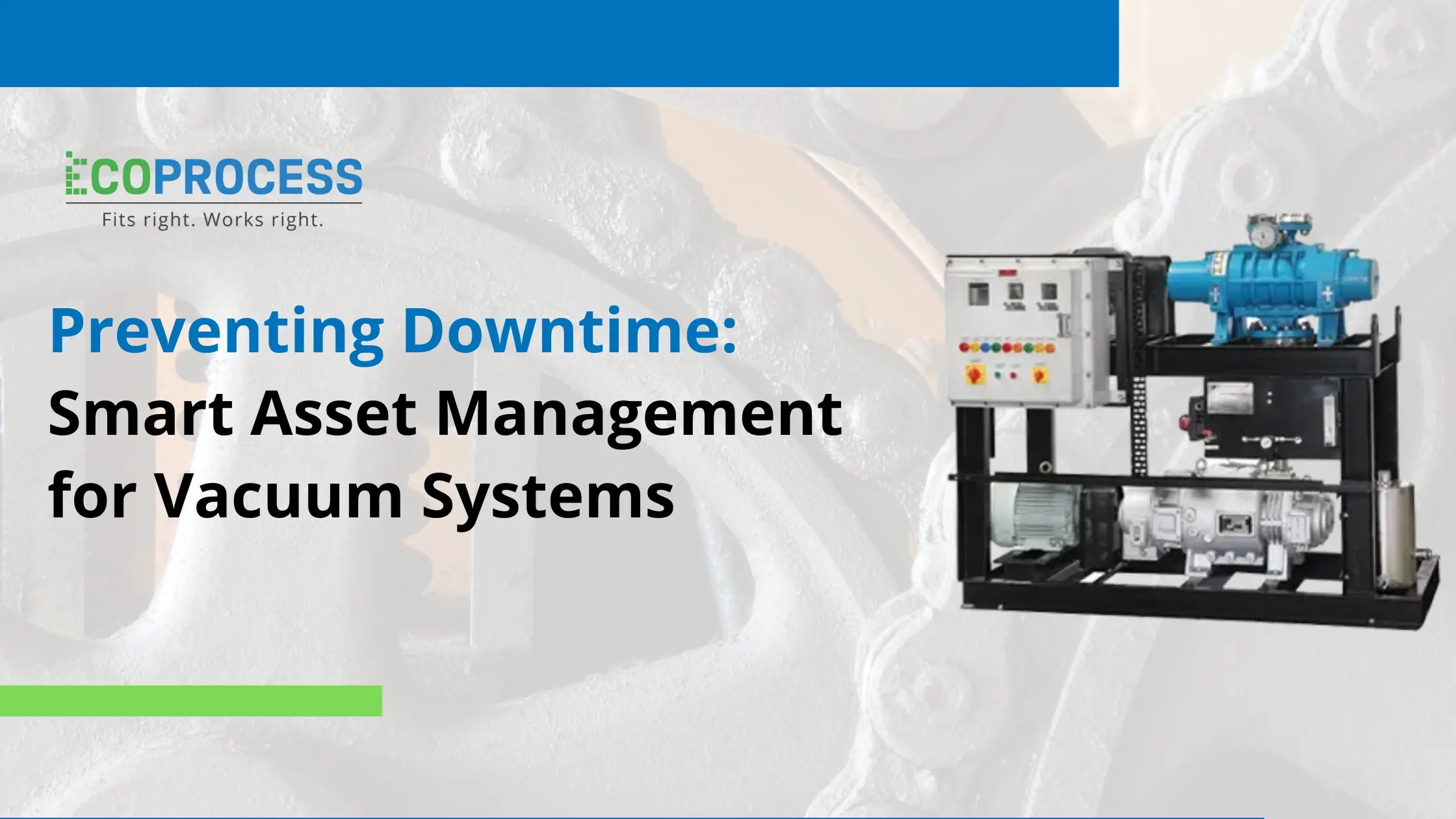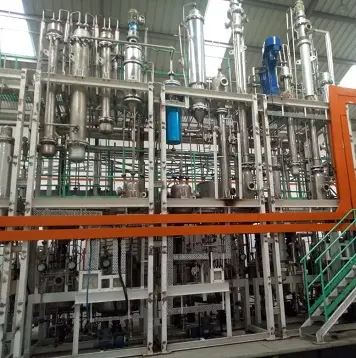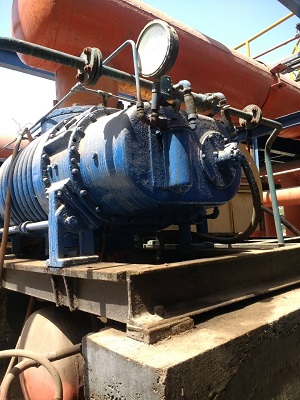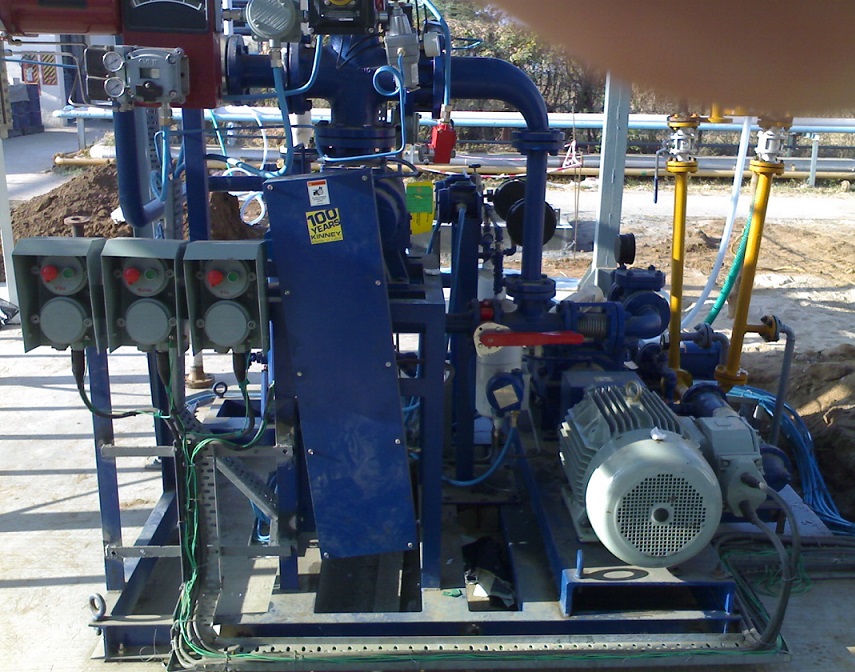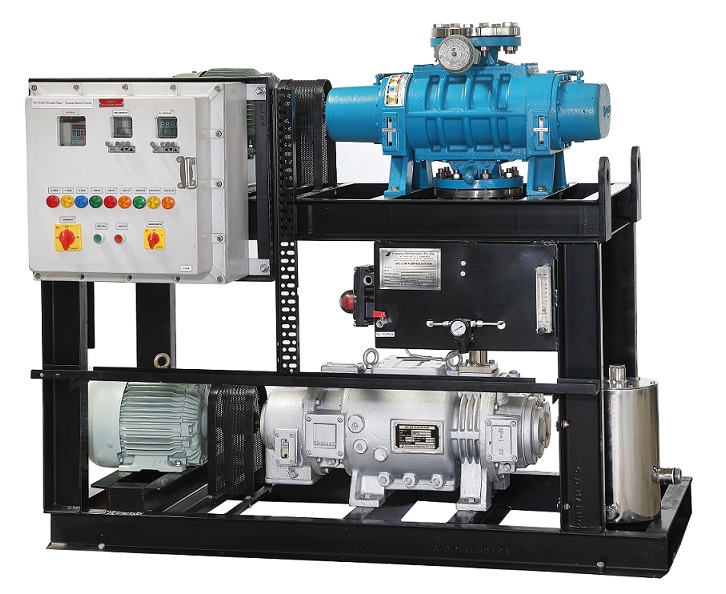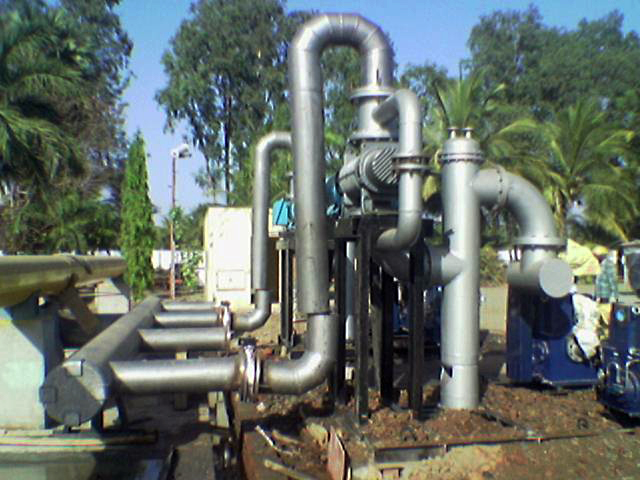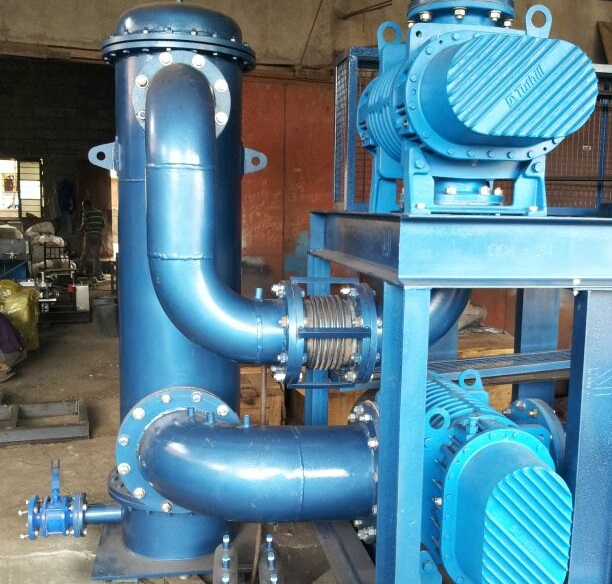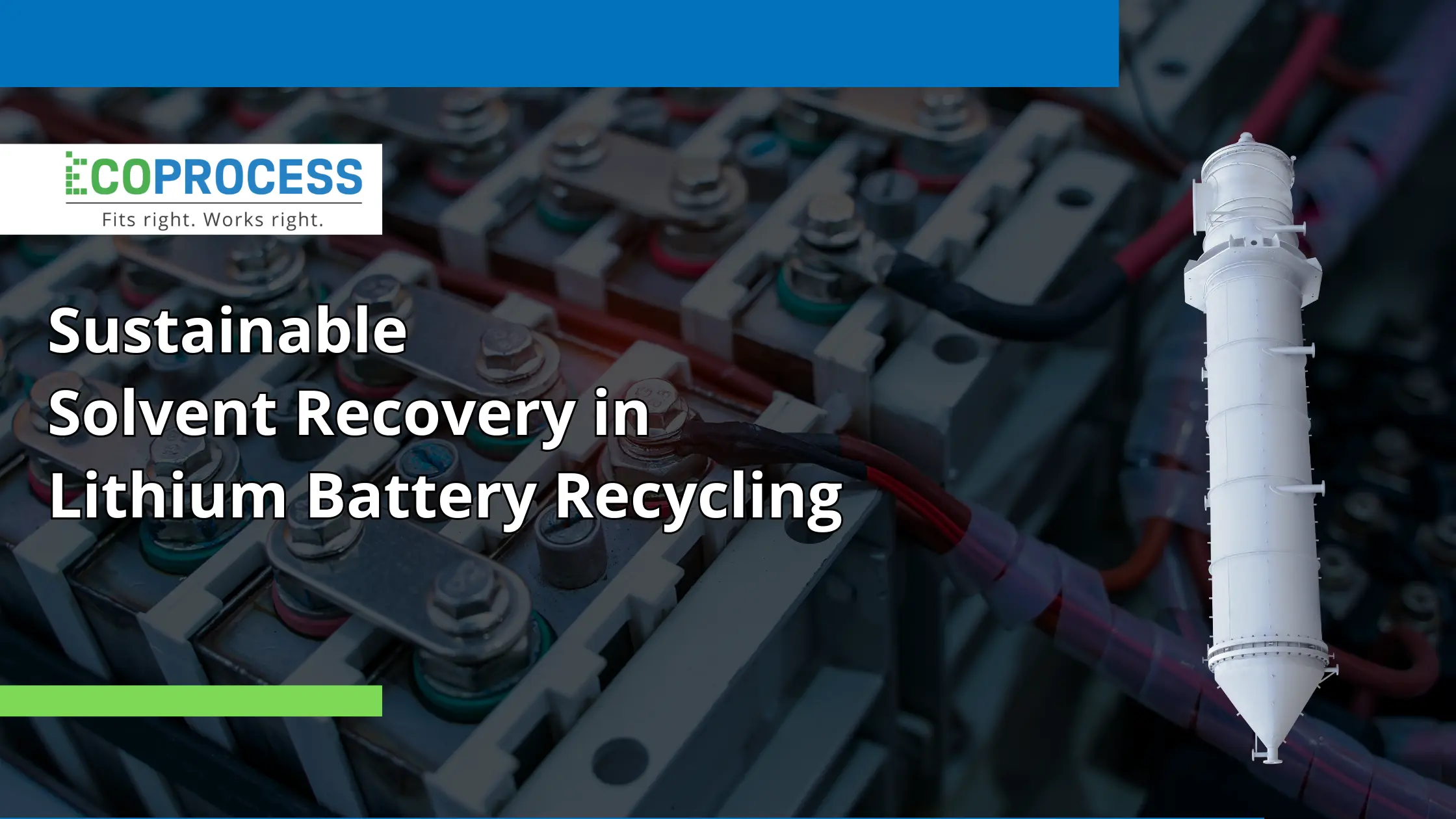
Sustainable Solvent Recovery in Lithium Battery Recycling
Lithium-ion batteries are in high demand due to the growth of electric cars, grid storage, and consumer electronics. As a result, recycling has gained popularity both physically and figuratively. Among the most troublesome aspects of recycling? NMP and DMF are examples of the solvents used in electrode processing.
These solvents accumulate as garbage, harm the environment, and cost recycling businesses money if they are not collected appropriately.
The good news is that the equation is beginning to shift due to advanced recovery techniques, including vacuum evaporation, ATFD (Agitated Thin Film Distillation), and MEE (Multiple Effect Evaporation). When properly implemented, they simplify, lower the cost, and facilitate the expansion of recycling.
Challenges in Battery Recycling
Recycling batteries isn’t just breaking things down and calling it a day. It comes with serious technical and financial roadblocks:
-
Messy electrode mixes: Cathodes and anodes aren’t simple; they’re layered with lithium, nickel, manganese, cobalt, carbon, binders, and leftover solvent. Clean separation is tough.
-
Excessive solvent consumption: Procedures such as delamination and stripping consume a lot of solvent. The majority of it becomes polluted, making disposal costly and inefficient.
-
Regulations and safety: A lot of solvents are flammable, poisonous, or volatile. Compliance expenses are increased by regulations pertaining to hazardous disposal and VOC emissions.
-
High operational costs: Energy is needed to treat waste streams. Recycling runs the danger of costing more than mining fresh material if recovery is not possible.
Because of these hurdles, solvent recovery isn’t just nice to have, it’s the lever that can make battery recycling sustainable at scale.
Vacuum Evaporation in Action
Vacuum evaporation is a workhorse in chemical processing and fits battery recycling perfectly. By lowering the pressure, solvents boil at much lower temperatures.
Why that matters:
-
Less heat stress → protects sensitive materials like binders.
-
Cleaner output → fewer by-products and less decomposition.
-
Configurable systems → single-effect, multi-effect, thin film, or falling film setups depending on need.
In short, vacuum evaporation helps shrink down contaminated solvent streams and sets them up for further purification.
Why ATFD & MEE Make a Difference
ATFD (Agitated Thin Film Distillation)
Picture a thin film of liquid spread over a hot surface, constantly stirred and renewed by wipers. That’s ATFD in a nutshell. The thin layer plus agitation means:
-
Fast heat and mass transfer → solvents vaporize quickly and cleanly.
-
High recovery rates with good purity.
-
Short residence time → the solvent isn’t cooked too long, so fewer side reactions.
-
Modular design → can adapt to batch or continuous recycling setups.
MEE (Multiple Effect Evaporation)
MEE takes energy efficiency up a notch. Vapor from one stage becomes the heating source for the next. The result:
-
Lower overall steam/energy demand.
-
Reduced operating cost per liter of solvent recovered.
-
Ability to handle varying feed concentrations handy since recycling waste streams are rarely uniform.
Often, the smart move is to use MEE for bulk concentration and ATFD for polishing together, they balance scale, efficiency, and purity.
Environmental & Economic Impact
When solvent recovery is done right, the ripple effects are big:
-
Fresh solvent savings: Recovery rates of 80–95% or more slash the need for new solvent purchases.
-
Cleaner operations: Lower VOC emissions and less hazardous waste sent offsite.
-
Energy wins: Heat recovery setups, especially in MEE, trim steam use and energy bills.
-
Profit boost: Lower costs mean recycling starts competing with mining.
-
Compliance and reputation: Companies can hit environmental targets while showing off greener credentials.
Given how tight margins are in recycling, even small gains here can flip the economics from “barely viable” to “scalable.”
Conclusion
The future of recycling lithium batteries depends on solvent recovery, which is not just another process modification. Together, vacuum evaporation, ATFD, and MEE allow recyclers to reduce solvent waste, save energy, and operate lucrative, sustainable operations.
These systems will be the foundation of a closed-loop battery economy as electrification continues to pick up speed.
FAQ
1. What is the significance of solvent recovery in the recycling of lithium batteries?
Due to the high cost, toxicity, and widespread usage of solvents like NMP and DMF. Recovering them simultaneously lowers recycling expenses and lessens environmental harm.
2. What is the benefit of vacuum evaporation?
By lowering pressure, it decreases the boiling point of solvents. This implies that solvents
can be recovered without scorching and harming delicate battery components.
3. What’s the difference between ATFD and MEE?
ATFD is great for high-purity recovery thin film, short exposure, minimal degradation. MEE, on the other hand, is all about energy efficiency and bulk solvent concentration. Together, they make a strong team.
4. How much solvent can actually be recovered?
With the right setup, recovery rates of 80–95% are common. That’s a huge reduction in fresh solvent purchase and waste.
5. Is solvent recovery expensive to set up?
Yes, there’s an upfront investment in equipment, but the payback comes quickly. Savings in fresh solvent costs, lower energy use, and avoided waste disposal usually offset the setup cost.
6. Beyond cost savings, what are the big wins?
Compliance with environmental regulations, fewer emissions, a smaller carbon footprint, and stronger sustainability credentials for recycling companies.
